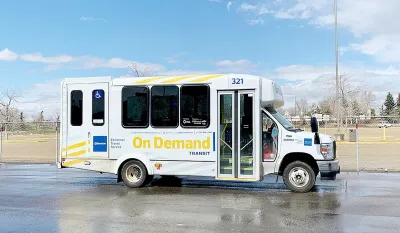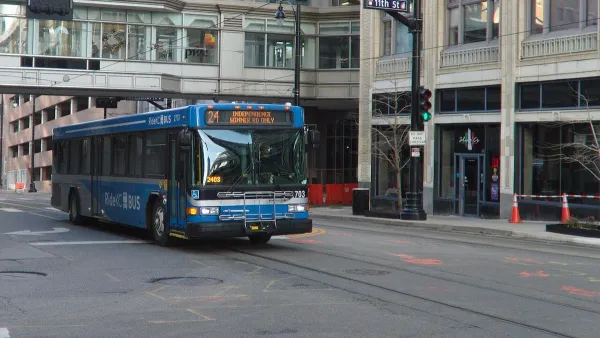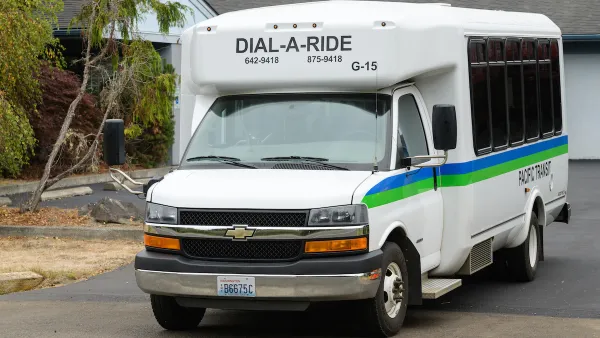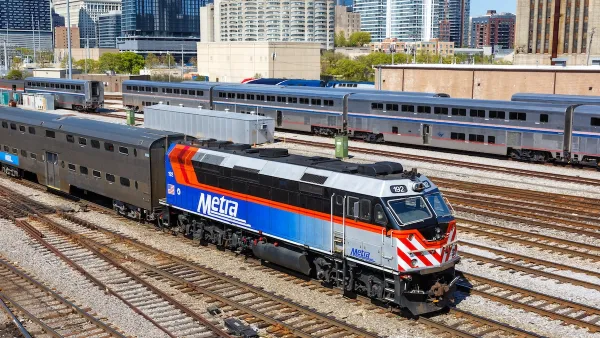On-demand microtransit is gaining popularity with transit agencies, but is it at the expense of existing service?

Transit advocates are sounding the alarm on the rapid rise of microtransit programs, which transit agencies around the country are turning to as an affordable way to supplement existing services but which some fear could undermine fixed-route services.
As Jared Brey reports in Governing, microtransit, particularly on-demand services, can help residents who aren’t otherwise well-served by transit services improve their mobility. However, “Advocates say it’s inefficient, highly expensive per rider and an opportunity cost for transit agencies that doesn’t increase ridership overall.”
Microtransit has its benefits, Brey notes, citing examples from Gwinnett County, Georgia, and Jersey City. It can vastly improve mobility options for rural residents, elderly people, and others who cannot or do not drive. But in some cases, the cost to the city is exceedingly high: programs in Los Angeles and Sacramento are costing those cities around $43 per ride.
To be fair, Brey notes, “All public transit is heavily subsidized, and many officials say it’s worth investing in options for people who don’t live near bus and train lines. But a key question is what microtransit is meant to accomplish.” For TransitCenter’s Chris Van Eyken, “Services should be judged on whether they increase overall ridership on a transit system,” and microtransit has not yet been shown to do so. The question remains whether microtransit offers “meaningful mobility at a community or city scale.”
FULL STORY: Microtransit Has Broad Appeal, Despite Clear Drawbacks

National Parks Layoffs Will Cause Communities to Lose Billions
Thousands of essential park workers were laid off this week, just before the busy spring break season.

Retro-silient?: America’s First “Eco-burb,” The Woodlands Turns 50
A master-planned community north of Houston offers lessons on green infrastructure and resilient design, but falls short of its founder’s lofty affordability and walkability goals.

Delivering for America Plan Will Downgrade Mail Service in at Least 49.5 Percent of Zip Codes
Republican and Democrat lawmakers criticize the plan for its disproportionate negative impact on rural communities.

Test News Post 1
This is a summary

Test News Headline 46
Test for the image on the front page.

Balancing Bombs and Butterflies: How the National Guard Protects a Rare Species
The National Guard at Fort Indiantown Gap uses GIS technology and land management strategies to balance military training with conservation efforts, ensuring the survival of the rare eastern regal fritillary butterfly.
Urban Design for Planners 1: Software Tools
This six-course series explores essential urban design concepts using open source software and equips planners with the tools they need to participate fully in the urban design process.
Planning for Universal Design
Learn the tools for implementing Universal Design in planning regulations.
EMC Planning Group, Inc.
Planetizen
Planetizen
Mpact (formerly Rail~Volution)
Great Falls Development Authority, Inc.
HUDs Office of Policy Development and Research
NYU Wagner Graduate School of Public Service





























